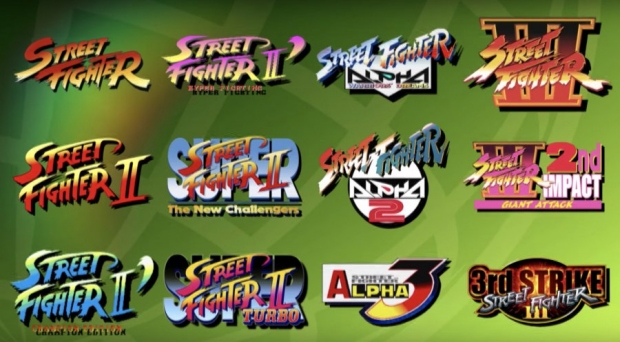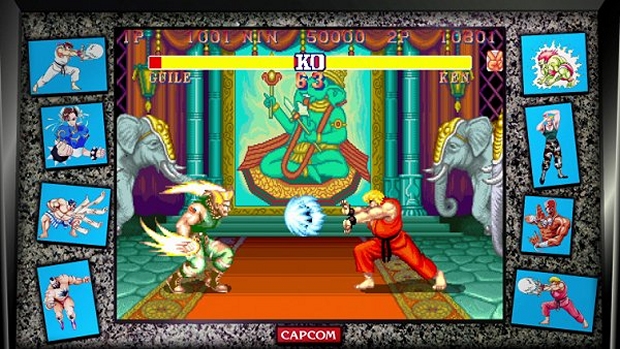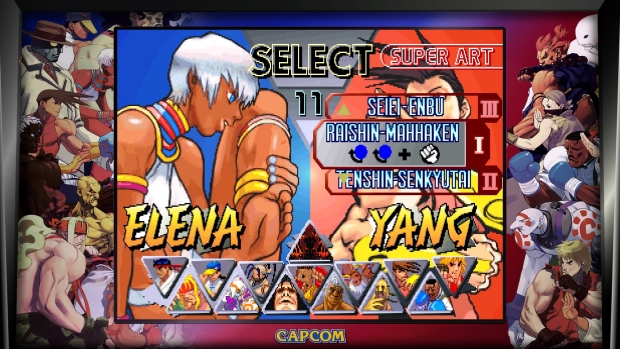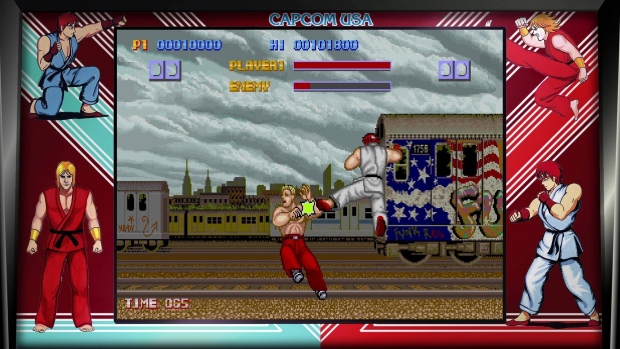Street Fighter 30th Anniversary Collection Review
Twelve arcade ports in one package sounds pretty rad and all, but is Capcom's new retro collection worth it? Here's our review!
Release Date: May 29, 2018Platform: PS4, Xbox One, Switch (reviewed), PCDeveloper: Digital EclipsePublisher: CapcomGenre: Fighting
Capcom has a habit of rereleasing old stuff in a new package. It’s beyond parody. The publisher just released yet another Mega Man collection to wet our whistles for an upcoming Mega Man X collection. Marvel vs. Capcom: Infinite was mostly made out of old Ultimate Marvel vs. Capcom 3 assets. Capcom used the same flat Darkstalkers Morrigan sprite from 1994 to 2001. Street Fighter II has been upgraded countless times since 1991. In fact, the last Street Fighter II game, Ultra Street Fighter II: The Final Challengers, came out on the Switch last year….
The company has certainly mastered the art of selling the same game over and over again. That brings us to Street Fighter 30th Anniversary Collection, which collects all 12 2D core arcade Street Fighter games with a couple of extras. Twelve games sounds pretty huge, but is it truly all it’s cracked up to be? On paper, it’s really a cluster of four different engines and their upgrades. There are ultimately some real redundancies in the package that will only satisfy the most hardcore fan.

First up is Street Fighter from 1987. The original. The one that Richie from It was so dedicated to mastering, which was less believable than the shapeshifting demon sewer clown. Street Fighter is the one that started it all and it’s worth a single playthrough, but that’s about it. Truth is, the game is one-third something promising and two-thirds dog shit. It’s clunky and barely playable and lacks the ability to choose your fighter. The voice samples are downright embarrassing.
It’s nice to see the early stages of the series’ concepts and the likes of Ryu, Ken, Sagat, and so on, but there’s a reason people have nostalgia for Street Fighter II and not this one. Like watching the public access episodes of Mystery Science Theater 3000, it’s only there as a historic curiosity.
Now we get into the sub-series that had everyone lovingly mocking Capcom in the early ’90s, Street Fighter II, starting with Street Fighter II: The World Warrior. As someone who was obsessed with this game, I have to say that even at its most bare-bones, it still holds up. It’s such a crazy-good sequel despite having only eight characters to choose from and no supers or many of the bells and whistles we’re used to today.

That’s followed by Street Fighter II: Champion Edition, which allows you to play as the four boss characters. In 1992, this was the biggest deal ever. Even the new ability to do mirror matches was huge (you had to put in a code for the SNES port). 26 years later, you have perhaps the most redundant game in the collection that’s only worth revisiting if you want to play around with M. Bison’s grotesquely overpowered Psycho Crusher.
To fix those pesky balance issues, Street Fighter II Turbo: Hyper Fighting was released shortly after. It also adds faster speeds and new costume palettes if that’s your thing. Plus more moves, like Chun-Li’s fireball. It’s an incredibly solid entry, but again, pretty much unnecessary with the games that follow — like Super Street Fighter II: The New Challengers, which finally introduces a handful of new characters while giving the audio and non-gameplay visuals a real shot in the arm.
This all leads to 1994’s Super Street Fighter II Turbo. While, yes, Capcom did eventually release an upgraded version of this with Ultra Street Fighter II, this one is considered by many to be the ultimate entry in the sub-series. Not only does it have all 16 fighters from Super Street Fighter II, but there’s also the addition of super moves and the hidden boss character, Akuma. The game also has some of the best balance in the sub-series…as long as nobody’s using Akuma.
Shifting to a new engine, we get Street Fighter Alpha: Warriors’ Dreams. The in-between prequel games feature a brand new art style, meaning the sprites are all new across the board. The roster is very scant and its select screen not helped by the fact that three of the characters are hidden. It’s still fun to play, and even though Street Fighter Alpha 2 eats its lunch by adding more characters, the first game still has its own unique backgrounds and cutscenes if you’re into that.
The collection’s version of Street Fighter Alpha 3 is both awesome and disappointing. It blows Alpha and Alpha 2 out of the water with the roster size, superior arcade mode, and the variety of play-style. It still plays like a dream and all, but it suffers from being the arcade version. Yes, we knew that’s what we’d be getting since that’s the whole gimmick, but the console and handheld versions featured so many extra characters (mainly the remaining cast of Super Street Fighter II) and the whole thing feels incomplete.

Finally, there’s the Street Fighter III trilogy. Street Fighter III: New Generation is overshadowed by Street Fighter III: Second Impact, but the latter is just different enough from Street Fighter III: Third Strike that you can gladly play around with both. It’s always been a shame that, despite being one of the most solid games in the whole series, Third Strike is considered relatively obscure.
Third Strike remains fantastic and those good feelings don’t 100% come from the nostalgia. Despite being about 20 years old, the visuals are still amazing and the tight gameplay complements them to create one of the all-time best fighting games.
Only a handful of games in this collection are truly worth getting into and Capcom knows this. That’s why only four them get enough love to come with a training mode and online multiplayer. Those would be Street Fighter II Turbo: Hyper Fighting, Super Street Fighter II Turbo, Street Fighter Alpha 3, and Street Fighter III: Third Strike. I can’t complain about that.
And what of extras? Well, there’s the ability to save and load mid-game. Not going to lie, I used that for any game that had hidden bosses with special restrictions (i.e. no continues). It’s been decades, but I’ve finally been able to fight Akuma in Super Turbo. Scratch one off the bucket list.
The menus also tell you how to pull off every secret in every game, a welcome addition. God, I’m glad we’re past the ridiculous shit we had to do to unlock hidden characters in old Capcom games.
The collection also comes with a museum, which is nice. You can listen to every music track from all twelve games. There’s a Making of Street Fighter section that shows tons of high definition art for the games, including the infamous “characters who didn’t make Street Fighter II” sketches. There are character profiles, which unfortunately don’t include the obscure dudes only found in the first game. The History section goes year-by-year and talks about all the happenings of the series, though “all” might not be the best word to use. While Capcom tosses in mentions of the Street Fighter Saturday morning animated series and the live-action game based on the movie, don’t expect to see any mention of their crossovers with Marvel, SNK, or Namco.

Street Fighter fans should strongly consider getting the Street Fighter 30th Anniversary Collection, but you certainly won’t be engulfing yourself with all twelve games. As far as I’m concerned, Super Street Fighter II Turbo is the one to focus on while the various Alpha and Street Fighter III entries at least have enough content in the earlier editions to keep you interested. Alpha 2 and Second Impact may be stepping stones, but at least there’s more heart and originality than the quantity of Street Fighter II upgrades.
But for real, Third Strike is the top reason to get this collection. Super Turbo is the whipped cream and Alpha 3 is the cherry on the top. The first Street Fighter is the almonds that you pick off because you have an allergy.
Gavin Jasper wishes Street Fighter: The Movie: The Game was DLC for this. Follow him on Twitter!
